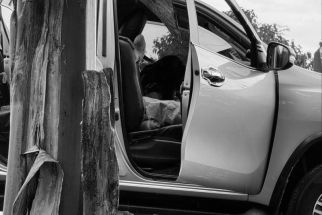DENR declares Rafflesia critical habitat in Bukidnon
MANILA, Philippines - The Department of Environment and Natural Resources (DENR) has officially designated an area in Bukidnon as the critical habitat of the country’s largest flower, Rafflesia, which has been classified as a threatened species.
DENR Secretary Ramon Paje issued Administrative Order No. 2011-02 declaring a two-hectare land in Sitio Kalanganan, Barangay San Vicente in Baungon, Bukidnon, a critical habitat of Rafflesia schadenbergiana.
“The Philippines takes pride in the endemicity of its biodiversity. The newly issued administrative order protecting the natural habitat of Rafflesia will allow the DENR to work closely with the surrounding communities in ensuring the survival of the country’s largest flower which unfortunately is a threatened species,” Paje said.
“By all means, we need to keep the critical habitat free from exploitation or destruction, and we can only do this through partnership with the local populace,” he added.
The Rafflesia schadenbergiana is known as “bo-o” or “kolon busaw” to the Bogobo and Higaonon tribes of Bukidnon.
It is categorized as critically endangered under DENR Administrative Order No. 2007-01.
Compared with other Rafflesia species, the “bo-o” is considered vulnerable to extinction because of its parasitic nature, particularly to the vine tetrastigma.
The “bo-o” has the second largest flower in the Rafflesia genus, with a diameter that can reach up to 80 centimeters.
It is also the largest among at least 10 Rafflesia species found in the Philippines.
Paje said the declaration of the critical habitat is in accordance with Republic Act 9147 or the Wildlife Resources Conservation and Protection Act, which aims to conserve and protect wildlife species and their habitats to promote ecological balance and enhance biodiversity.
The Rafflesia schadenbergiana was named after Alexander Schadenberg, a German ethnologist who made several expeditions to the Philippines.
The species was first collected in the vicinity of Mt. Apo in 1882, and was believed to be extinct until it was rediscovered in 1994 on Mt. Matutum in South Cotabato.
In 2007, its presence was also recorded in Baungon, Bukidnon, just outside the Mt. Kitanglad Natural Park.
- Latest
- Trending



























